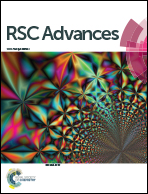Application of a microfluidic-based perivascular tumor model for testing drug sensitivity in head and neck cancers and toxicity in endothelium
Abstract
A drug sensitivity test prior to clinical treatment is necessary for individualized cancer therapy. A useful in vitro model that mimics the in vivo tumor microenvironment is required to select optimal anti-cancer agents. To promote the microfluidic technology moving from the laboratory to the clinic, we developed a microfluidic-based perivascular tumor model that makes it possible to assess drug sensitivity in 3D cultured tumor spheroids and toxicity in endothelium in parallel. The sensitivity and toxicity of PTX, 5-FU, and CDDP were assessed using the microfluidic model. It was found that high concentrations of single drugs destroyed the human umbilical vein endothelial cell line (HUVEC) layer, although they can effectively induce apoptosis of head and neck cancer cells. A combination of low concentrations of these drugs presented a good curative effect on tumor cells and low toxicity to the HUVEC layer. Then, we applied the model to test anti-cancer drug sensitivity in cancer patients. Individual differences to candidate drug combinations were found among these patients. This suggests that different chemotherapy plans should be made for individual patients. This study demonstrated that the microfluidic model might be a useful platform for individual drug tests prior to clinical treatment.


 Please wait while we load your content...
Please wait while we load your content...